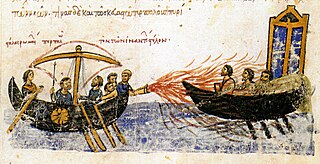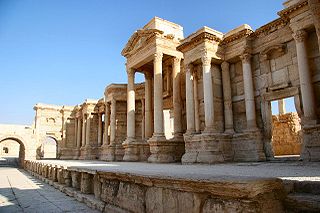
The history of the Mediterranean region and of the cultures and people of the Mediterranean Basin is important for understanding the origin and development of the Mesopotamian, Egyptian, Canaanite, Phoenician, Hebrew, Carthaginian, Minoan, Greek, Persian, Illyrian, Thracian, Etruscan, Iberian, Roman, Byzantine, Bulgarian, Arab, Berber, Ottoman, Christian and Islamic cultures. The Mediterranean Sea was the central superhighway of transport, trade and cultural exchange between diverse peoples encompassing three continents: Western Asia, North Africa, and Southern Europe.

A series of military conflicts between the Ottoman Empire and various European states took place from the Late Middle Ages up through the early 20th century. The earliest conflicts began during the Byzantine–Ottoman wars, waged in Anatolia in the late 13th century before entering Europe in the mid-14th century with the Bulgarian–Ottoman wars. The mid-15th century saw the Serbian–Ottoman wars and the Albanian-Ottoman wars. Much of this period was characterized by the Ottoman expansion into the Balkans. The Ottoman Empire made further inroads into Central Europe in the 15th and 16th centuries, culminating in the peak of Ottoman territorial claims in Europe.
Ancient warfare is war that was conducted from the beginning of recorded history to the end of the ancient period. The difference between prehistoric and ancient warfare is more organization oriented than technology oriented. The development of first city-states, and then empires, allowed warfare to change dramatically. Beginning in Mesopotamia, states produced sufficient agricultural surplus. This allowed full-time ruling elites and military commanders to emerge. While the bulk of military forces were still farmers, the society could portion off each year. Thus, organized armies developed for the first time. These new armies were able to help states grow in size and become increasingly centralized.

The Muslim conquest of Persia, also called the Muslim conquest of Iran, the Arab conquest of Persia, or the Arab conquest of Iran, was a major military campaign undertaken by the Rashidun Caliphate between 632 and 654. As part of the early Muslim conquests, which had begun under Muhammad in 622, it led to the fall of the Sasanian Empire and the eventual decline of Zoroastrianism, which had been predominant throughout Persia as the nation's official religion. The persecution of Zoroastrians by the early Muslims during and after this conflict prompted many of them to flee eastward to India, where they were granted refuge by various kings.

The Arab–Byzantine wars were a series of wars from the 7th to 11th centuries between multiple Arab dynasties and the Byzantine Empire. The Muslim Arab Caliphates conquered large parts of the Christian Byzantine empire and unsuccessfully attacked the Byzantine capital of Constantinople. The frontier between the warring states remained almost static for three centuries of frequent warfare, before the Byzantines were able to recapture some of the lost territory.

The Arab conquest of Egypt, led by the army of 'Amr ibn al-'As, took place between 639 and 642 AD and was overseen by the Rashidun Caliphate. It ended the seven-century-long Roman period in Egypt that had begun in 30 BC and, more broadly, the Greco-Roman period that had lasted about a millennium.

The Battle of Heliopolis or Ayn Shams was a decisive battle between Arab Muslim armies and Byzantine forces for the control of Egypt. Though there were several major skirmishes after this battle, it effectively decided the fate of the Byzantine rule in Egypt, and opened the door for the Muslim conquest of the Byzantine Exarchate of Africa.
The early military history of Armenia is defined by the situation of the Armenian Highland between the Hellenistic states, and later the Byzantine Empire, in the west and the Persian Empire to the east. The Kingdom of Armenia had a series of repeated struggles against Persia or Rome, followed by renewed conquests into either of the neighboring empires. The period after the Muslim conquests in the 7th century, up to the late 15th century, was mostly marked by invasions by other empires, such as by the successive Arab Caliphates, the Seljuk Empire, the Ilkhanate, the Timurid Empire and the Ak Koyunlu and Kara Koyunlu, amongst others. Some periods of greater military independence were, intermittently, achieved under the Bagratids and, albeit located outside the Armenian Highlands, the Armenian Kingdom of Cilicia.

The Muslim conquest of the Levant, or Arab conquest of Syria, was a 634–638 CE invasion of Byzantine Syria by the Rashidun Caliphate. A part of the wider Arab-Byzantine Wars, the Levant was brought under Arab Muslim rule and developed into the provincial region of Bilad al-Sham. Clashes between the Arabs and Byzantines on the southern Levantine borders of the Byzantine Empire had occurred during the lifetime of Muhammad, with the Battle of Muʿtah in 629 CE. However, the actual conquest did not begin until 634, two years after Muhammad's death. It was led by the first two Rashidun caliphs who succeeded Muhammad: Abu Bakr and Umar ibn al-Khattab. During this time, Khalid ibn al-Walid was the most important leader of the Rashidun army.

Umar was the second Rashidun Caliph and reigned during 634–644. Umar's caliphate is notable for its vast conquests. Aided by brilliant field commanders, he was able to incorporate present-day Iraq, Iran, Azerbaijan, Armenia, Georgia, Syria, Jordan, Palestine, Lebanon, Egypt, and parts of Afghanistan, Turkmenistan and south western Pakistan into the Caliphate. During his reign, the Byzantines lost more than three fourths of their territory and in Persia, Umar became the king (ruler) of Iran after the fall of the Sassanid Empire.

A series of Crusader invasions of Egypt were undertaken by the Kingdom of Jerusalem from 1163 to 1169 to strengthen its position in the Levant by taking advantage of the weakness of the Fatimid Caliphate.

Forces of the Rashidun Caliphate seized the major Mediterranean port of Alexandria away from the Eastern Roman Empire in the middle of the 7th century AD. Alexandria had been the capital of the Byzantine province of Egypt. This ended Eastern Roman maritime control and economic dominance of the Eastern Mediterranean and thus continued to shift geopolitical power further in favor of the Rashidun Caliphate.
This article lists people, events and other subjects which are referred to as "of Alexandria".

Byzantine Anatolia refers to the peninsula of Anatolia during the rule of the Byzantine Empire. Anatolia was of vital importance to the empire following the Muslim invasion of Syria and Egypt during the reign of the Byzantine Emperor Heraclius in the years 634–645 AD. Over the next two hundred and fifty years, the region suffered constant raids by Arab Muslim forces raiding mainly from the cities of Antioch, Tarsus, and Aleppo near the Anatolian borders. However, the Byzantine Empire maintained control over the Anatolian peninsula until the High Middle Ages, when imperial authority in the area began to collapse.










